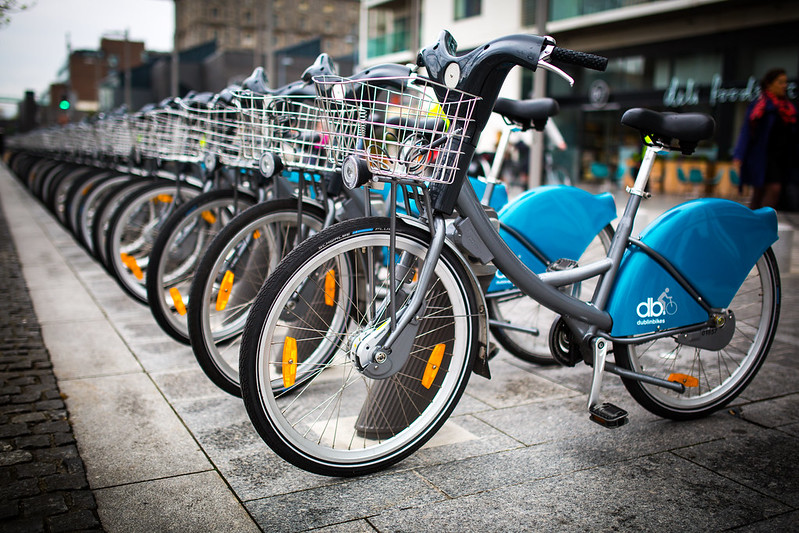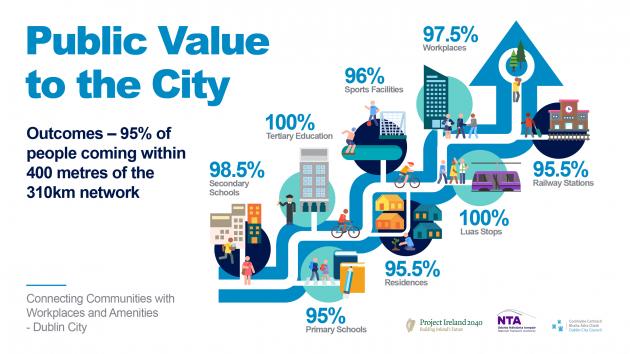
Photo: melfoody (Flickr)
Dublin plans large expansion of active travel infrastructure
26 October 2022
by Christopher Carey
Dublin City Council has unveiled plans to transform its current 10 kilometres of walking and cycling routes into a city-spanning network of over 310 kilometres.
The Active Travel Network – set to be completed over the next nine years – also aims to ensure that 95 percent of residents live no further than 400 metres away from the routes.
The network will incorporate segregated cycle lanes, widened footpaths and additional infrastructure for impaired users.
Dublin’s Lord Mayor Caroline Conroy said the new routes will make it easier and safer for people to get around.
“It will also include features to assist the mobility of people with disabilities, as well as green spaces and open areas for citizens to meet and relax,” she said.
“It is a fantastic programme, and I look forward to seeing it roll out over the coming years.”
The initiative is being delivered by Dublin City Council and funded by Ireland’s National Transport Authority.

Bus Connects
Ninety kilometres of the envisioned cycle network will be dependent on how the Irish capital’s Bus Connects project progresses.
The project – which involves an overhaul of the city’s bus network, including frequencies, interchange, spine and orbital routes – got underway last year.
But proposals for segregated cycle lanes to be built in tandem with the new bus scheme will first have to be approved by Ireland’s planning authority, An Bord Pleanala.
“The Bus Connects [cycle] schemes have to go to Bord Pleanala for approval and currently a number of routes have been lodged for permission,” Brendan O’Brien, Head of Technical Services, Environment & Transportation, Dublin City Council, told Cities Today.
“The entire Bus Connects corridors are meant to be all completed by 2028, but obviously some will be earlier than that.”
Challenges
The modal share of all trips made in Dublin by active travel is currently 12 percent, and the city council wants to increase this to 25 percent by 2028.
But authorities could face challenges in implementing the project, as residents have been successful in blocking previous cycle lane schemes.
Owen Keegan, Dublin City Council’s Chief Executive, admitted there may be some people who will lose out.
“Particularly when we’re taking out parking outside shops and businesses, I can’t deny that can have an adverse impact on those businesses,” he said.
“But we’re serving the overall public good by providing a more sustainable transport network. There is a cost to be paid and some businesses and individual homeowners who have on-street parking do pay a price, but that is outweighed I think by the overall benefit to society as a whole,” he added.
The Irish government’s Climate Action Plan requires an overall emissions reduction of 50 percent by 2030, but Dublin has signed up to be an EU Mission City and is aiming to achieve net zero by 2050.
Image: melfoody (Flickr)










